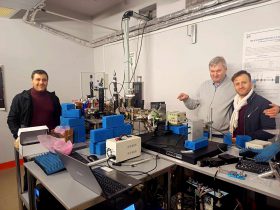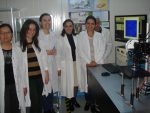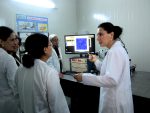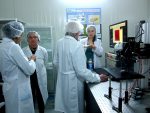June 10, 2020
The research group headed by Dr. Gohar Tsakanova has published the results of the application of two-photon microscopy in the study of human aging in the high rating “Biomedical Optics Express” (Journal of Optical Society of America, Impact Factor – 4.23) – G. Tsakanova, et al., “Two-photon imaging of oxidative stress in living erythrocytes as a measure for human aging”, Biomed. Opt. Express, v.11, pp. 3444-3454 (2020). The study is carried out at DELTA two-photon microscopy station (CANDLE) by the scientists from the Institute of Molecular Biology NAS RA and CANDLE Synchrotron Research Institute.
Aging is a complex process resulting in alterations of physiological functions and in elevated mortality rate. It is accompanied by different modifications in genetic, molecular, cellular, organ and system levels, leading to the susceptibility to many aging-related pathological diseases. Reactive oxygen species have been shown to be one of the primary determinants of aging. According to the “oxidative stress theory” of aging, this process is accompanied by a progressive and irreversible accumulation of oxidative damage caused by reactive oxygen species. This, in turn, has a deleterious impact on molecular mechanisms in aging thereby altering the physiological function of the organism, increasing the risk of different aging-related diseases, as well as impacting the life span.
Although the age is a continuous variable, which cannot be changed anyhow, however, its phenotypic occurrence is very heterogeneous and is changed from individual to individual, which is reflected in the individual’s susceptibility to different age-related diseases, death, life span and quality of life. Particularly, aging is one of the leading factors for such diseases as anemia, Alzheimer’s disease, cardiovascular diseases, osteoporosis, dementia, diabetes, etc.
Taking into account the “oxidative stress theory” of aging and the urgent need to develop sensitive methods and approaches for the assessment of the risk of aging mortality, the aim of current study was to investigate oxidative stress in living red blood cells in human aging as an oxidative stress-related pathological condition, as well as to suggest two-photon imaging of living red blood cells as a novel indicator for aging processes.
Two-photon laser scanning and light microscopy techniques were applied to analyze the oxidative stress in red blood cells and the cell viability. The studies included three human aging groups, young, middle-aged, and elderly.















